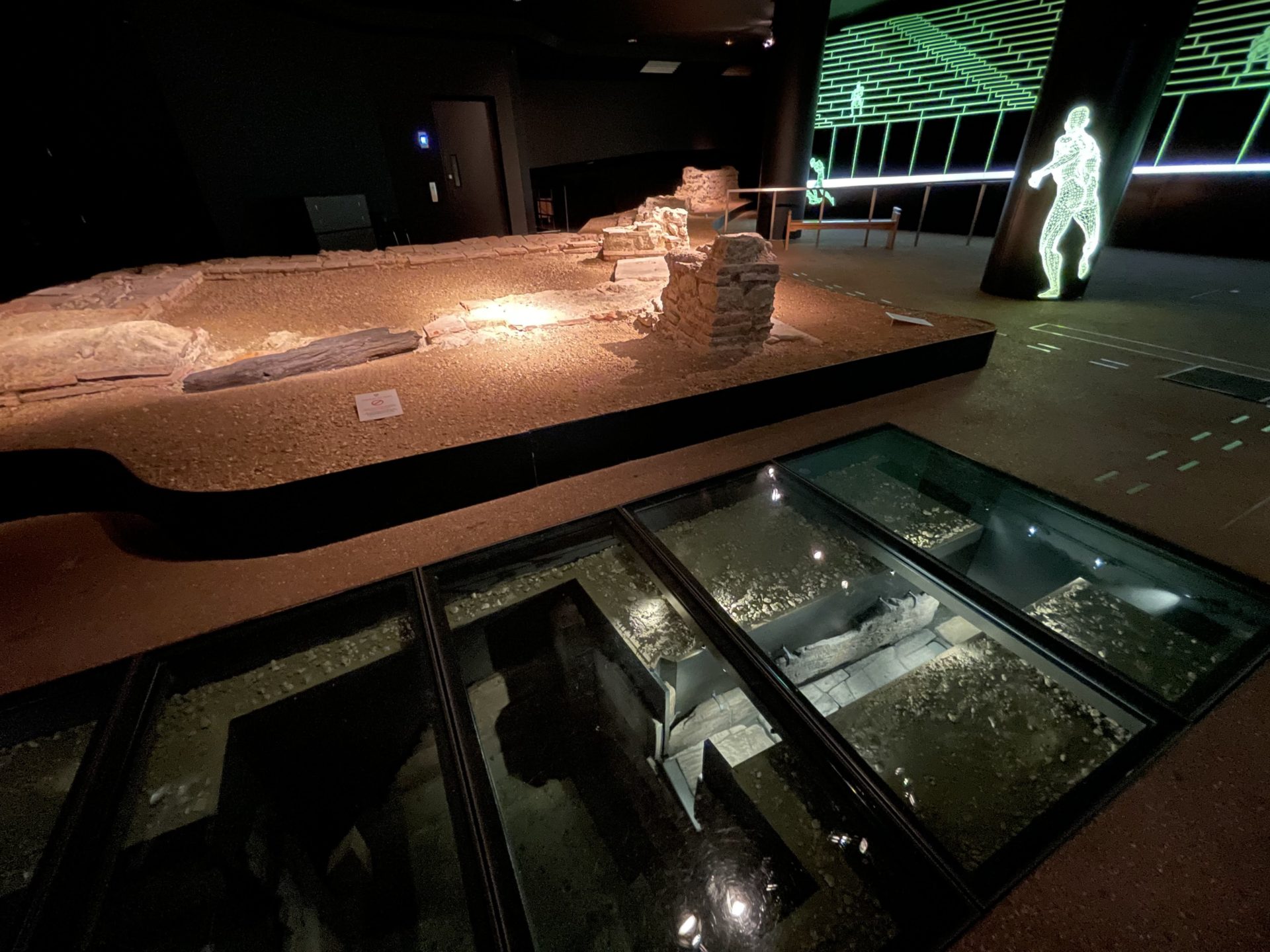This article has partner links that I may receive compensation from at no cost to you. Thank you for supporting my site by using them!
Underneath Guildhall in London lies one of the most important historic sites from the Roman era of Londinium. Roman buildings such as houses & baths, temples, and more can be found scattered around London. However, in this spot beneath government buildings lies one of the largest Roman ruins in the city: London’s Roman amphitheater.
The perimeter of the Roman amphitheater in London is hidden in plain sight. Walk around the plaza outside the Guildhall Art Gallery, and you’re actually standing right above where the amphitheater was located.

See that line of black stone tiles on the edge of Guildhall Yard? It indicates the perimeter walls of the London amphitheater.
But it’s not just this outline of the location of London’s Roman amphitheater that is of note. Inside the Guildhall Art Gallery, you can head into the ruins of the amphitheater below.
Visiting the Guildhall Art Gallery is free, although timed entry tickets are needed. On a recent visit, there was no wait, but it’s best to book ahead so you aren’t disappointed. The museum is open every day. You can book tickets on the official website here. There are also tours available.
Book your hotel in London now!The Roman amphitheater at Guildhall is inside the art museum just like any exhibit. It’s a bit away from the entrance, but if it’s your main reason for visiting, the staff will be happy to tell you the easiest way to get there (though the rest of the museum is also worth checking out!).
Ancient Londinium was located far below the level of the city today, so the ruins are down in the basement.

London’s Roman amphitheater was a community gathering place. It was used for gladiator games, executions, and other activities. It was like a smaller version of the Colosseum, but it still held thousands of people (an estimated capacity of 7,500-10,000).
The amphitheater was constructed around 70AD from wood, but then later renovated with tiles & stone in the 2nd century. By the 4th century, it had been abandoned. Today, you can see some of the foundations and walls that still remain below Guildhall. The site wasn’t discovered until 1988 when construction of the art gallery began. The archaeological site was excavated until 1996, then turned into a public exhibit in 2002.
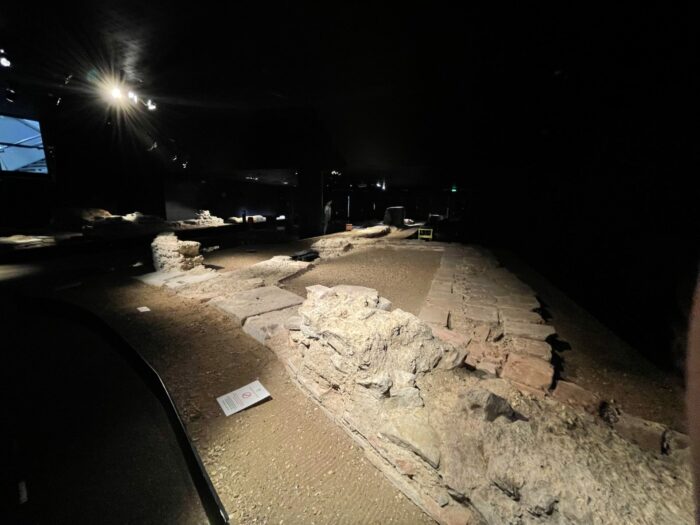
There are timber drains that have also been preserved in situ. Your footsteps trace the route of how people would have passed through the eastern entrance of the London amphitheater nearly 2,000 years ago.
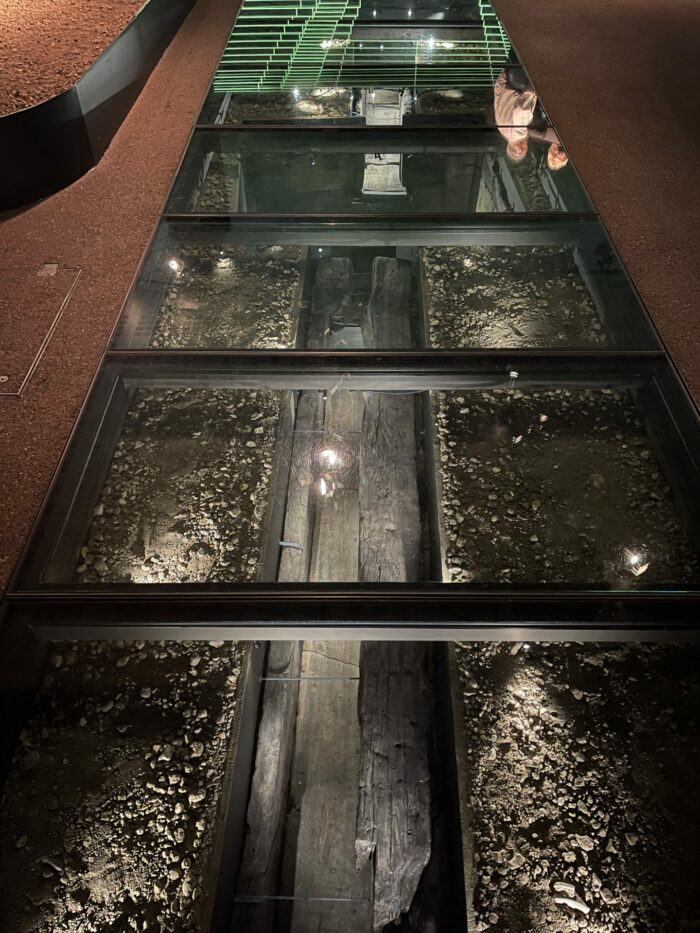
Since only portions of the walls remain, light is used to show what the remainder of the site would have looked like from this vantage point.


Just outside & above the London amphitheater ruins within the Guildhall Art Gallery is an exhibit with more information about the site, along with Roman objects that were found during the excavation.
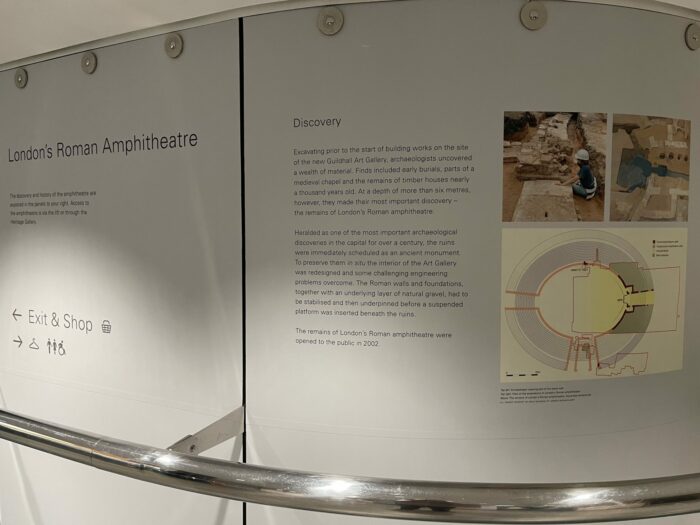
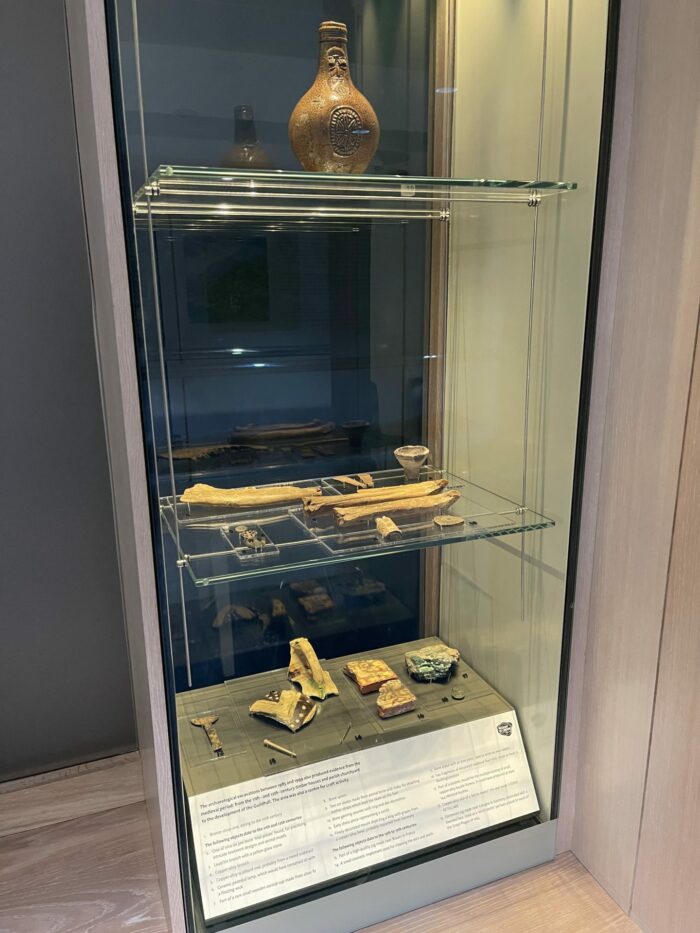
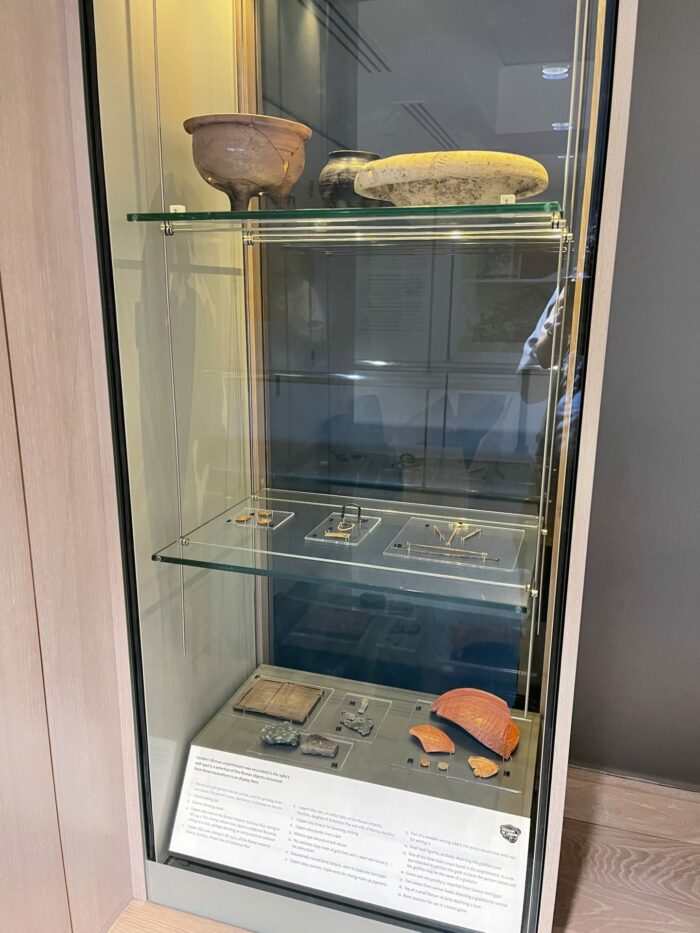
The Guildhall Art Gallery isn’t huge, so it’s worth taking a quick walk through it even if you’re mostly there to see the ruins. Of note to history fans is the gallery’s copy of the Magna Carta. This London copy is the finest surviving copy of the Magna Carta from the 1297 edition.
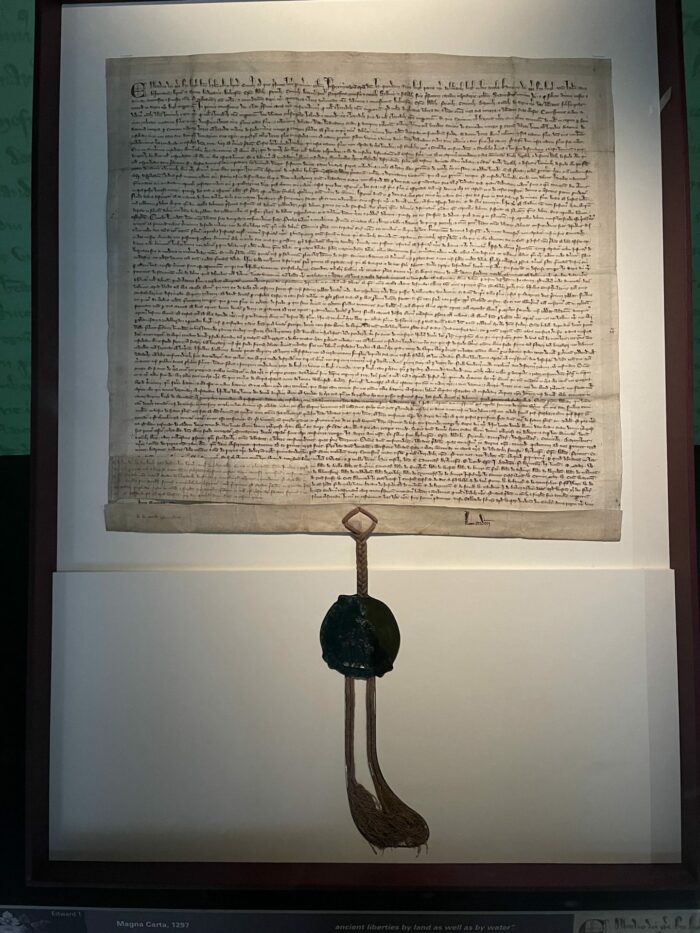
London’s Roman amphitheater provides a glimpse into life in the city thousands of years ago. A visit can be combined with other historic spots for an interesting afternoon of Roman architecture in London. Nearby, you can also visit the London Mithraeum and the Billingsgate Roman House & Baths.
Here are some great London tours & activities & other things to see & do in London.
If you’re looking for a place to stay in London, check out these London hotels.

